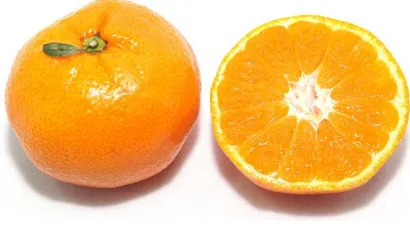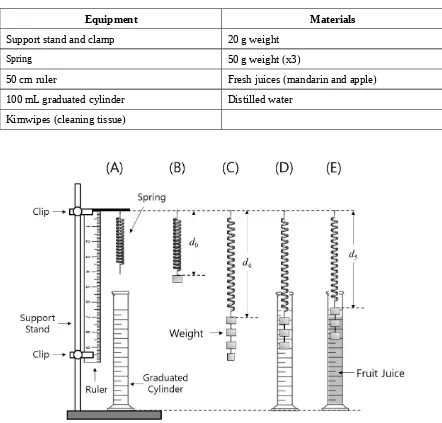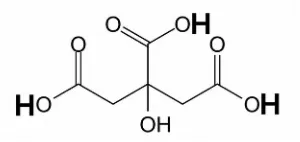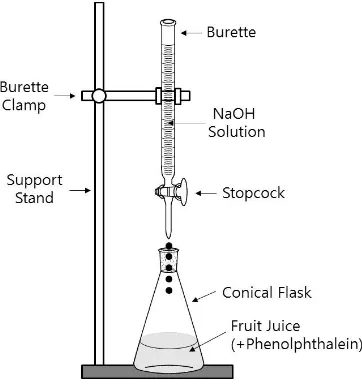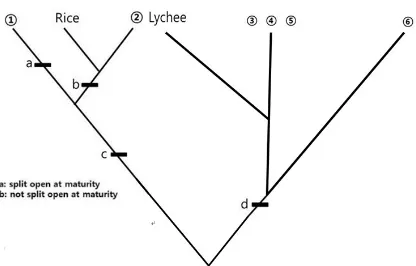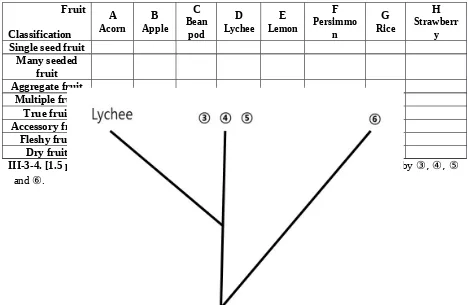December 8, 2015
Do NOT turn to next page
before a whistle is blown.
Otherwise, you will receive a penalty.
1. You have 30 minutes to read “EXAMINATION RULES”,
“EXPERIMENT INSTRUCTIONS”, “CALCULATOR INSTRUCTIONS”,
and whole exam sheets and to plan your experiments.
EXAMINATION RULES
1. You are NOT allowed to bring any personal items into the examination room, except for
personal medicine or approved personal medical equipment.
2. You must sit at your designated table.
3. Check the stationery items (pen, calculator, and rough book) provided by the organizers.
4. Do NOT start your experiments before the
“START”
whistle.
5. You are NOT allowed to leave the examination room during the experiment, except in an
emergency in which case you will be accompanied by a supervisor/volunteer/invigilator.
6. Do NOT disturb other competitors. If you need assistance, raise your hand and wait for a
supervisor to come.
7. You can ONLY ask questions and discuss the experiments with your own team members.
You must STAY at your table until the end of the time allocated for the experiments, even
if you have finished the experiments or do not wish to continue.
EXPERIMENT INSTRUCTIONS
1. After the “START” whistle, you will have 3 hours and 30 minutes to complete the
experiments.
2. Use only the pen provided by the organizers (not pencil).
3. The total number of experiments is 3. Check you have a complete set of the exam sheets
(
15 pages, page 4 – page 18
) and answer sheets (
10
pages). Raise your hand, if you find
any missing sheets.
4. NOW write your name, code, country and signature in your first answer sheet, and your
name and code in the next pages of your answer sheets.
5. Read carefully the experimental procedures and questions and write your answers in the
corresponding boxes of the answer sheets.
6. When units are provided in the answer sheets, you have to write the answers correctly for
the units.
7. You MUST wear a
Lab Coat
and
Gloves
during the experiments.
8. Only the answer sheets will be evaluated. Before writing your answers on the answer
sheets, use the rough book provided.
CALCULATOR INSTRUCTIONS
1. Turning on: Press
.
2. Turning off: Press
.
3. Clearing data: Press
.
4. Addition, subtraction, multiplication, division
Example 1)
45+
285
3
45
285
3
140.
Example 2)
18+6
15−8
18
6
15
8
3.428571429
Example 3)
42×(−5)
+12042
5
120
-90.
42
5
120
-90.
5. Exponential
Example 1)
8.6
−28.6
2
0.013520822
Example 2)
6.1
×
10
236.1
10
23
6.1 x 10
23Introduction of Experiments
“Gam-Gyul” (Figure 1), a seedless and easy-peeling citrus species, is one of the most popular fruits in Korea with a unique ‘sweet’ and ‘sour’ taste. All of you have already tasted “Gam-Gyul” during your stay in Korea.
Figure 1. Gam-Gyul
In this competition, you will perform the following three experiments related to “Gam-Gyul”.
Experiment I. Determination of the Densities of Fruit Juices
Experiment II. Determination of the Citric Acid Contents of Fruit Juices
Experiment III. Anatomy of Fruits and Seeds
In experiments I and II, mandarin (Gam-Gyul) and apple juices will be analyzed. In experiment III, you will observe the inside of some fruits.
Experiment I: Determination of the Densities of Fruit Juices
1.Background
[ Hooke’s Law]
Hooke's law is a principle of physics that states that the force F needed to extend or compress a spring by some distance x is proportional to that distance. That is: F = − kx, where k is the spring constant, characteristic of the spring, its stiffness.
Figure I-1. Hooke’s law
[Archimedes’ Principle]
2. Materials
Equipment Materials
Support stand and clamp 20 g weight
Spring 50 g weight (x3)
50 cm ruler Fresh juices (mandarin and apple)
100 mL graduated cylinder Distilled water
Kimwipes (cleaning tissue)
3. Experimental Procedure
[In this experiment, the exact masses of all weights are already provided on the envelope of each weight. You should use the given masses for your calculation.]
1. Suspend a spring from a clamp as shown in Figure I-3(A).
2. Hook a 50g weight to the spring. Record the exact value of the mass in column d0 on Answer
Sheet (I-1-1).
3. Record the length of the spring (d0) as shown in figure I-3(B) with accuracy of one decimal
place on Answer Sheet (I-1-1).
4. Perform 4 more measurements with the other weights, increasing the total weight on the spring by adding more weights. For each combination (columns d1to d4), record the exact
mass and measure the length of the spring and write them on Answer Sheet (I-1-1). The accuracy for length measurement should be to one decimal place.
5. Remove all weights from the spring.
6. Pour about 70 mL of water into the graduated cylinder and record the volume on Answer Sheet (I-2-1)
7. Lower the spring and the 50g + 50g + 50g weights such that only the two bottom weights are fully immersed into the water and record the volume on Answer Sheet (I-2-1).
8. Lower the spring and the chain further so that all three weights are fully immersed into the water and record the volume on Answer Sheet (I-2-1). You may have to pull the spring down or raise the cylinder to ensure all three weights are immersed.
9. Remove the water and clean the cylinder and weights.
10. Wipe off the water on the weights using Kimwipes.
11. Hang the spring and the chain of 50g + 50g + 50g weights into the graduated cylinder. Record the length of the spring on Answer Sheet (I-2-2). Gently pour in the apple juice until only the two bottom weights are fully immersed into the juice (you might have to raise the cylinder).
12. Record the length of the spring with accuracy of one decimal place on Answer Sheet (I-2-2). 13. Gently pour more apple juice into the graduated cylinder until all three weights are fully
immersed into the juice (you might have to raise the cylinder).
14. Record the length of the spring with accuracy of one decimal place on Answer Sheet (I-2-2). 15. Rinse off the juice with water and repeat steps 10 through 14 for the mandarin juice.
4. Questions [14 Points]
I-1. [6.0 points]
I-1-1. [1.25 points] Procedure1 through 5
I-1-2. [2.5 points] Plot the lengths of the spring (y) with the corresponding values of masses (x). Draw the best fitted line on your plot on Answer Sheet (I-1-2).
I-1-3. [1.25 points] Determine the slope and intercept from the graph and write them down on on
Answer Sheet (I-1-3).
I-1-4. [1.0 point] Calculate the spring constant in N/m on Answer Sheet (I-1-4) (Assume that the gravitational acceleration is 9.81 m/s2)
I-2. [6.0 points]
I-2-1.[2.0 points] Fill in the table on Answer sheet (I-2-1) for the measurements of the procedures 7 and 8. Calculate the volumes of two 50g weights and three 50g weights.
I-2-2.[2.0 points] Calculate the difference in the lengths of the spring with weights in the apple juice and mandarin juice, respectively, from procedures 11, 12, 13, 14 and 15 on Answer sheet (I-2-2).
I-2-3.[2.0 points] Calculate the buoyant forces exerted by both juices (respectively) on the different weights on Answer sheet (I-2-3).
I-3. [2.0 points] Calculate the average densities of the apple juice and mandarin juice, respectively on
Answer sheet (I-3).
1. Background
[Citric Acid]
Citric acid, present in citrus fruits, is a weak organic acid with the formula C6H8O7. (Figure II-1) It is
also used to add a sour taste to foods and drinks. Citric acid, together with small amounts of malic and tartaric acid, gives citrus fruits their tartness and unique taste. The levels of the acid in citric fruits are at the highest early in the season and then decrease as the fruits mature.
Figure II-1. Molecular structure of citric acid
[Acid and Base]
Arrhenius proposed that an acid and a base are substances that release protons (H+) and hydroxide ions
(OH), respectively, when they are dissolved in water. Though there are more general definitions of acid and base, Arrhenius’ acid-base concept is still useful for analyzing many acid-base reactions in aqueous solutions.
When dissolved in water, citric acid becomes a triprotic acid capable of releasing maximum 3 H+ ions
(marked by the bolded H in figure II-1). If a strong base, such as sodium hydroxide (NaOH), is added to an aqueous solution containing the acid, each of the protons from the acid react with one OH from NaOH to form water (H2O), and the sodium ion (Na+) remaining from NaOH takes the place of each
proton of the acid to form a dissolved salt. This type of acid-base reaction is called a neutralization reaction.
C6H8O7 (aq) + 3 NaOH(aq) → Na3C6H5O7(aq) + 3 H2O(l) (1)
[Acid-Base Titration]
method is called titration. A titration involves delivery (from a burette) of a measured volume of a solution of known concentration (the titrant) into a solution containing the substance being analyzed (the analyte). The point in the titration where enough titrant has been added to react exactly with the analyte is called equivalence point. This point is often marked by an indicator, a substance added at the beginning of the titration that changes color at (or very near) the equivalence point. The point where the indicator actually changes color is called endpoint.
In this experiment, you will use a NaOH solution as a titrant to determine the concentrations of citric acid (analyte) in fruit juice. Phenolphthalein will be used as an indicator. Figure II-2 shows the experimental set-up for the titration. You will add the NaOH solution into the fruit juices. During early stages of the titration, the color of the juice will remain yellowish. When a pink/purple color starts to develop, add the solution more slowly. At this point you should add one drop at a time until a light pink/purple color persists for at least 30 seconds. This is the endpoint which will be considered as an equivalence point for this experiment.
Figure II-2. Experimental set-up for acid-base titration
Since the amount of H+ released from the citric acid of the fruit juice is exactly the same as that of OH in the total volume of the added NaOH solution up to the endpoint, it is possible to determine the concentration of the acid. Recall that molar concentration (mol/L) can be measured in molarity:
Molarity (M)
¿
Moles of solute
(
mol
)
Volume of solution
(
L
)
(2)You may assume that the only acid present in the fruit juice is citric acid.
Two fruit juices, mandarin and apple, are prepared for your experiment. You will report the percent concentration of citric acid in each juice. The percent concentration (mass fraction) is expressed as:
Percent (%)
¿
Mass of citric acid
Mass of solution
×
100
(3)2. Materials
Equipment Chemicals
50 mL burette 0.100 M NaOH solution
Support stand and burette clamp 1% Phenolphthalein indicator
10 mL pipette and pipette filler Distilled water
100 mL conical flask Fresh juice (mandarin and apple)
1L bucket (for waste)
Funnel
Pipette filler instruction
1. Carefully secure the bottom of the
pipette filler to the top of the pipette
(without forcing) while holding the
pipette near its top.
2. Release air from the pipette filler by
squeezing valve “A” on the top of the
pipette filler while simultaneously
squeezing the bulb. Release more air for
larger volume pipettes.
3. Put the tip of the pipette into the liquid to
be measured.
4. Draw liquid up into the pipette to the
desired level by squeezing valve “S” on
the bottom of the pipette filler. This uses
the vacuum created in the bulb to draw
liquid up into the pipette. Be careful not to draw liquid up into the pipette filler.
5. Empty the pipette by squeezing valve “E” on the side
‐
tube. This allows you to release
liquid at the desired rate and to the desired level.
3. Experimental Procedure
→ Before starting with experiment, read the instructions for the pipette filler carefully and if necessary, make yourself familiar with it’s use by practicing with water.
1. Shake the bottle of juice. Pipette 10 mL of mandarin juice into a clean conical flask.
2. Clean the pipette immediately with distilled water.
3. Add approximately 10 mL of distilled water into the conical flask containing the juice.
4. Add six drops of phenolphthalein indicator to the flask.
5. Mix the solution carefully by swirling it around.
6. Fill the burette with the 0.100 M NaOH solution using a funnel.
7. Open the burette stopcock and allow a trickle of the NaOH solution to run into a waste bucket. This is to ensure no air is in the burette prior to titration.
8. Record the initial volume of NaOH solution with accuracy of two decimal places in the burette on Answer Sheet (II-1).
9. Place the conical flask under the burette and slowly add the NaOH solution to the flask.
10. When color change starts to develop, add the NaOH solution more slowly. Titrate with the sodium hydroxide solution until the end point is achieved. (Color change persists for at least 30 seconds.)
11. Record the final volume of NaOH solution of the burette with accuracy of two decimal places on Answer Sheet (II-1).
12. Clean the flask with distilled water.
13. Repeat steps 1 – 12 with mandarin juice three more times.
14. Repeat steps 1 – 12 with the apple juice four times.
4. Questions [13 Points]
II-1. [7.0 points] Calculate the volume (in mL) of the NaOH solution consumed for each titration and the average volume for titrating the mandarin and apple juices.
II-2. [2.0 points] Calculate the average number of moles of NaOH to complete the titration of citric acids in mandarin and apple juices.
II-3. [2.0 points] Calculate the number of moles and masses (in grams) of citric acid in 10 mL of the mandarin and apple juices. (The atomic masses of C, H, and O are 12.0, 1.00, and 16.0 g/mol, respectively.)
II-4. [2.0 points] Calculate the percent concentrations of citric acid in the mandarin and apple juices. In the calculations, assume the density of each juice is 1.00 g/cm3.
III-1. [1.0 point] The figure below shows a diagrammatic portrayal of open lemon flower.
Make a cross section by cutting through the middle of the lemon horizontally. Draw the section. Label
the location of the structure(s) originated from A in the diagram.
III-2. [2.5 points] The figure shows a diagrammatic portrayal of an open apple flower.
III-3. Angiosperms are known as the flowering plants. They are characterized by flowers, endosperm within the seeds, and the production of fruits that contain the seeds. A typical fruit has an outer wall called the pericarp that is composed of the exocarp, mesocarp, and endocarp. For example, if you cut an apple in half longitudinally, the skin is the exocarp, the fleshy portion is the mesocarp and the papery part is the endocarp. Inside the endocarp is the seed. Fruits can be classified by using the following incomplete classification key:
Figure III-1. Classification key for eight fruits
III-3-1. [2.0 points] Select a letter of the alphabet (A) to (H) from Box 1 that best represents fruit ①
in Figure III-1. Do the same for fruit ②.
[Box 1 ]
(A) Acorn (B) Apple (C) Bean pod (D) Lychee (E) Lemon
(F) Persimmon (G) Rice (H) Strawberry
[Box 2]
<Fruit classification scheme> I. Origins
I-a. Simple fruit : formed from a single pistil (carpel) I-a-1 Single seed fruit
I-a-2 Many seeded fruit
I-b. Compound fruit : formed from more than one pistil (aggregate fruit and multiple fruit) I-b-1. Aggregate fruit : formed from a cluster of separate pistils born in a single flower
I-b-2. Multiple fruit : formed from the pistils of several to many flowers
II. Composition
II-a. True fruit : composed of only the ripened ovary with its seeds contained
II-b. Accessory fruit: composed of the ripened ovary with other additional parts such as receptacle, bracts, portions of perianth, etc.
III. Descriptions
III-a. Fleshy fruit: outer wall becomes soft and fleshy as it matures.
III-b. Dry fruit: outer wall becomes dry at maturity.
III-3-3. [4 points] Examine the fruits carefully. You may need to section the fruit in order to do so. Refer to the fruits as indicated in Box 1 and tick (√) all appropriate classification categories in the table below for each of the fruits (A to H).
Fruit Classification A Acorn B Apple C Bean pod D Lychee E Lemon F Persimmo n G Rice H Strawberr y Single seed fruit
Many seeded fruit Aggregate fruit Multiple fruit True fruit Accessory fruit Fleshy fruit Dry fruit
III-3-4. [1.5 points] Identify which fruits from Box 1 most appropriately are represented by ③, ④, ⑤
Number
Alphabet in Box 1
③
④
⑤
⑥
